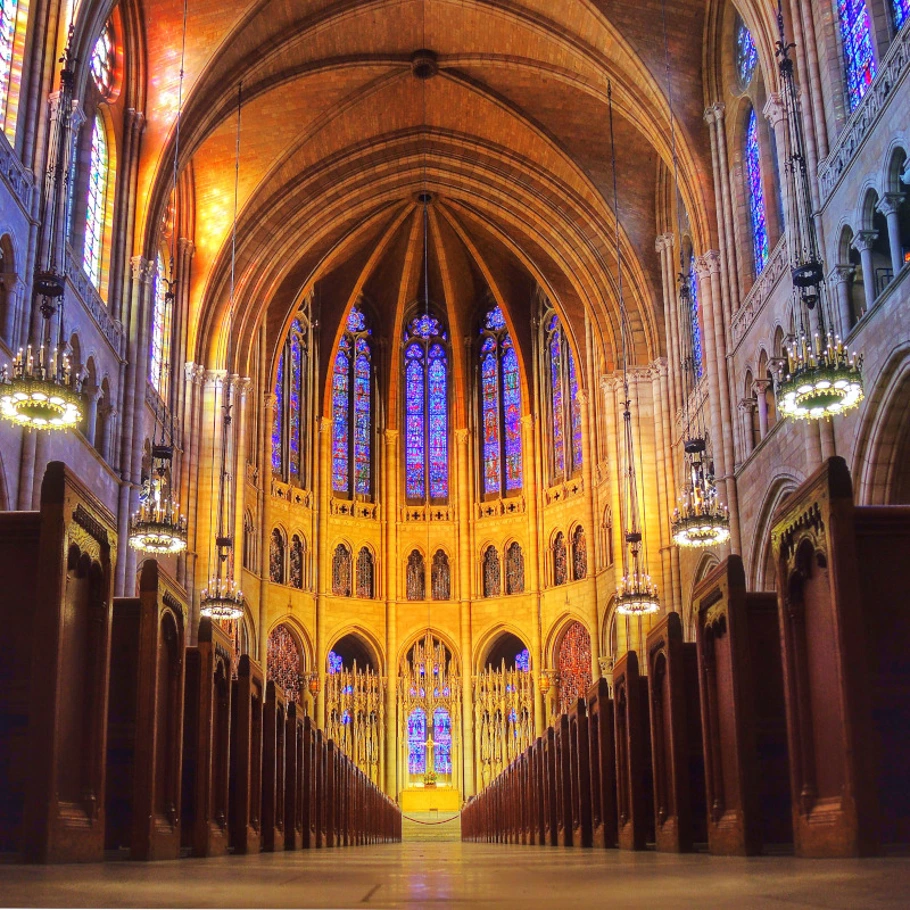Church Heating
How to heat a church
One of the most critical challenges facing Church buildings today is ensuring it caters to all worshipers, staff and visitors' needs and comfort, and remains welcoming in winter. We explore the best options for heating Church buildings correctly.
Heating a Church
A Church is all about the people: the people who visit and take care of it. Choosing the proper heating is a difficult balance between keeping people comfortable and cutting greenhouse missions, and often preserving historic interiors.
All Churches are unique. A Church's heating system affects the contents and the congregation; picking wisely is paramount, yet heating is not one-size-fits-all.
The ideal solution is providing comfort at a reasonable running cost. Below we explain some of the individual options which suit different Churches' needs.
Church Heating options
Depending on the age of the Church building, it may already have a form of heating.
Whilst installing central heating is the most obvious, installing self-contained heaters may be a more practical alternative for many Churches.
Space heating
A space heater is a self-contained heating appliance designed to heat an enclosed space. Room heaters can be powered by oil, gas or electricity. Having stand-alone heaters means they can be easily transported to areas in the Church most in need of heating.
You can maintain a comfortable temperature in a constantly used Church because the heat produced can more easily equal heat lost.
Whilst a Space Heater consumes electricity and fuels, it can be unplugged when not in use, saving lots on energy bills.
Underfloor heating
Underfloor heating is an electric or water system that you have installed under flooring as the main source of heat in the building. It is easy to install, causes little disruption, and does not take up any seating or standing space.
An underfloor heating system is energy-efficient, cost-effective, easy to run and maintain, and it's safe. The downside to having your heating installed under the floor is the cost and time it takes to install.
Background heating
Background heating is a form of space heating with different controls. It maintains heating at a minimum temperature of 10-12°C at all times and can boost when required.
Some heat can be retained in stone Churches, meaning it can be released when there are more visitors.
Conservation heating
This form of heating attempts to preserve historic buildings and interiors. The heating is controlled by a humidistat which can keep humidity to a defined range.
Condensation and damp are the biggest dangers to a historic building if heated inappropriately, potentially leading to structural damage.
While its main benefit is looking after the building, you may need to adjust the temperature on colder days manually.
People heating
Heating for visitors is installed closer to where people sit, which can include pew heating. Infrared heating is highly energy-efficient, as it heats objects and people instead of empty space.
This style of heating can allow for varied heating areas across the Church interior, so depending on usage, the heating can essentially follow the occupants!
Choosing a fuel for Church heating
As shown, there is a wide range of heating options for Churches. Different heaters combine different objectives, from heating the space to heating the people. Different heaters also require other fuel sources, such as oil, gas or electricity.
Each has its pros and cons. Choosing the most suitable and the most cost-effective is vital for the comfort of the building and the congregation.
Oil
While oil has the highest pollution rating, there is an emerging market for alternative fuels that are cost-effective and friendlier to the environment.
Biodiesel reduces emissions significantly, especially if sourced locally. It is created from recycled plant oil and other organic waste from farms.
Gas
Gas is a cleaner option than traditional oil but still emits carbon dioxide.
Despite this, gas is the most cost-effective option for heating the large spaces for many Churches.
Electricity
There are a variety of ways to supply a building with electricity. First, of course, Standard grid electricity is still powered by fossil fuel energy.
However, many grids are switching to renewable energy, which is the best option for a Church aiming to cut its carbon footprint.
There are also choices of a Church creating their renewable energy by installing solar panels. Although there is a substantial upfront cost, the day to day energy produced can save a fortune.
Heat Pumps
Heat pumps extract heat from the outside using a heat exchanger and pump to move the heat into the building.
Heat pumps can attach to radiators, underfloor heating, or heat the air.
These are best for a regularly used building which needs steady heat, and this would not be as suitable in property with drafts.
Choosing heating for a Church
Before you decide how to heat your Church, examine your existing system, and tackle the areas where you need efficiency the most.
Choosing a new system is a big step, so it is best to weigh up existing problems instead of entering new ones.
The correct Church heating will strike a perfect balance between visitor comfort and cost-effectiveness.







